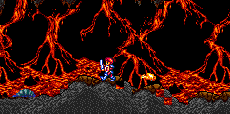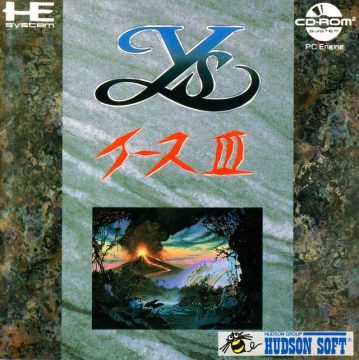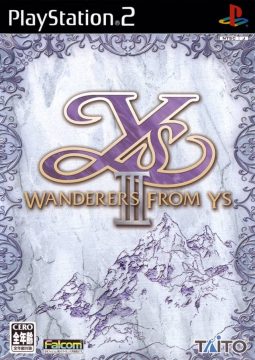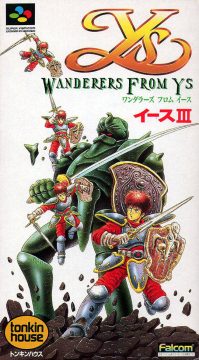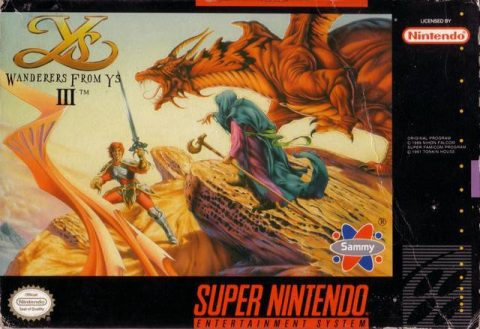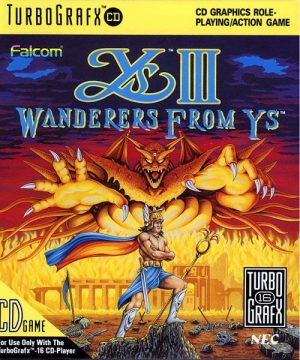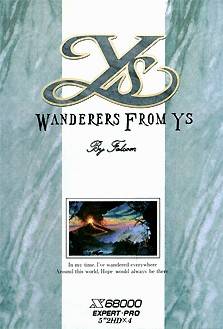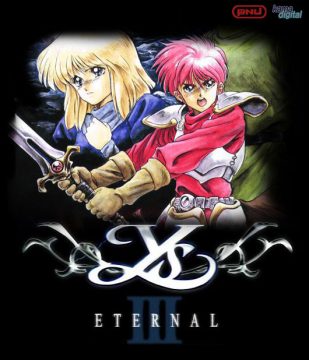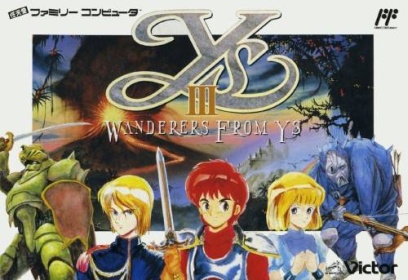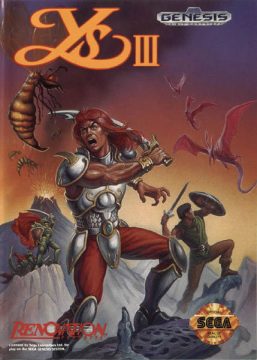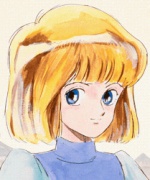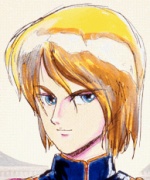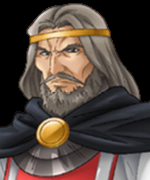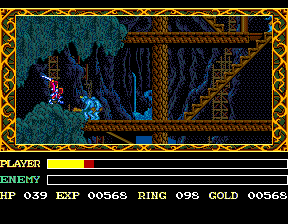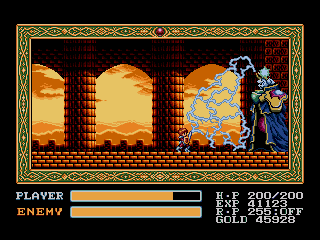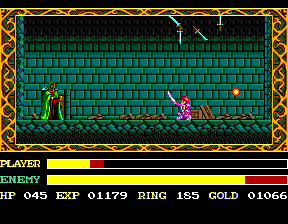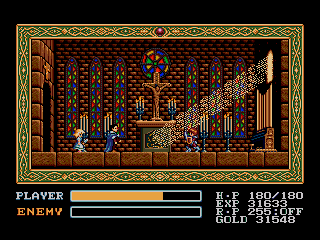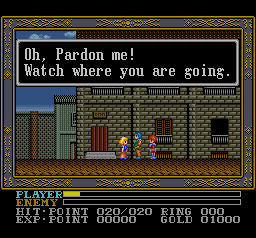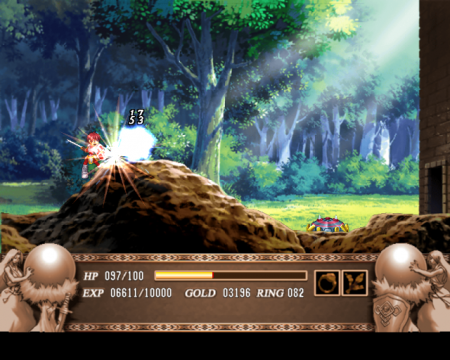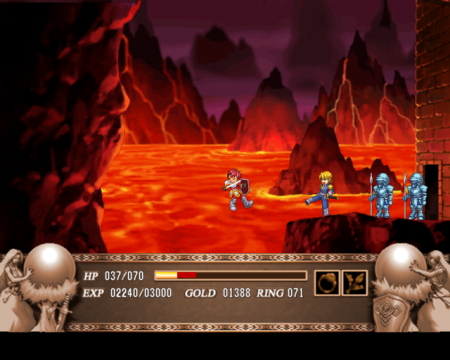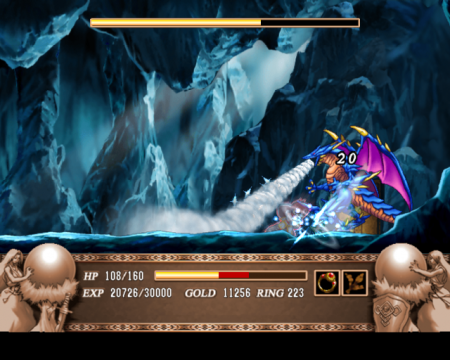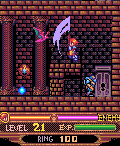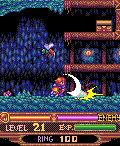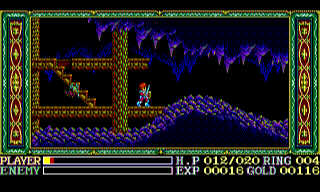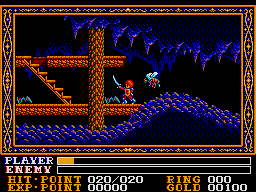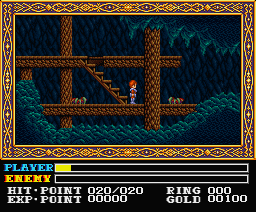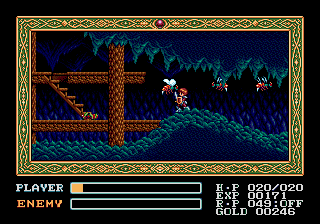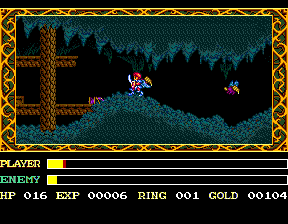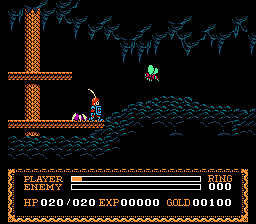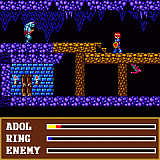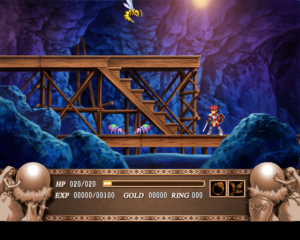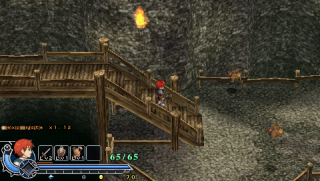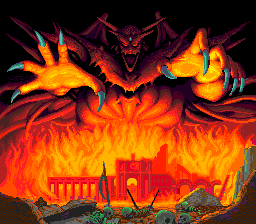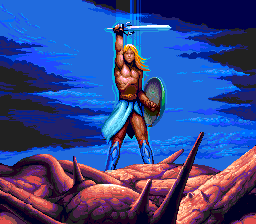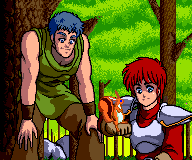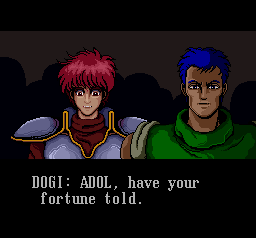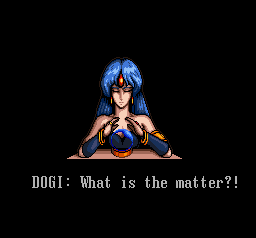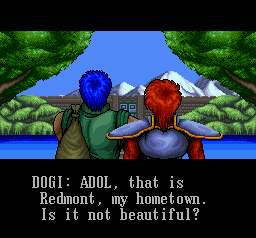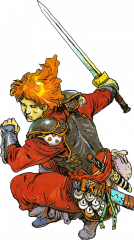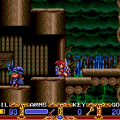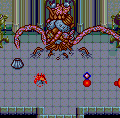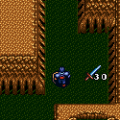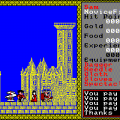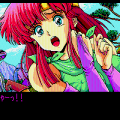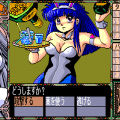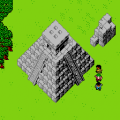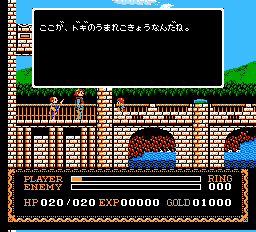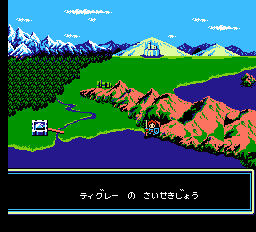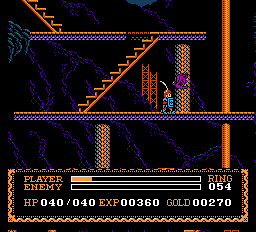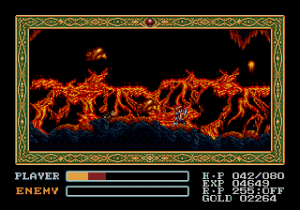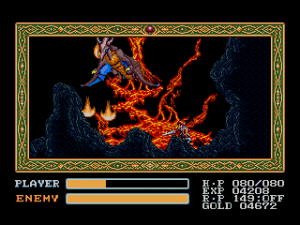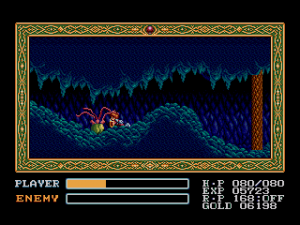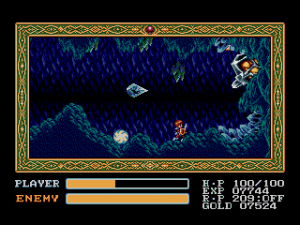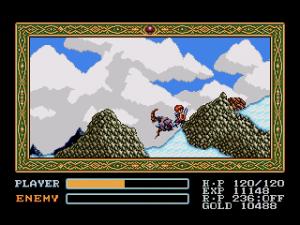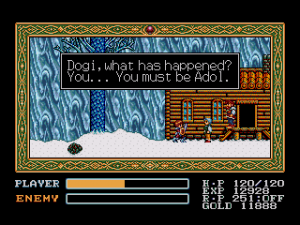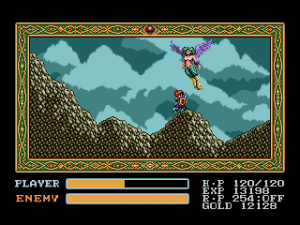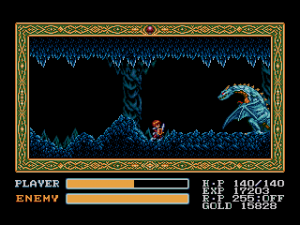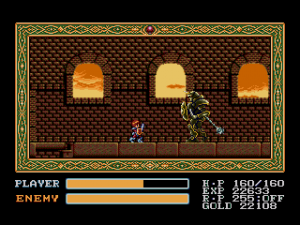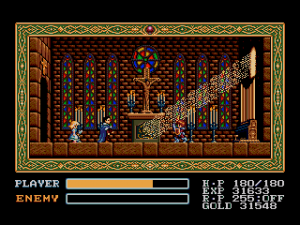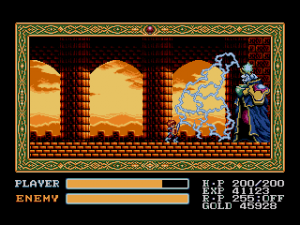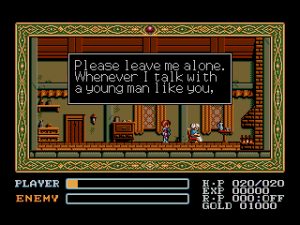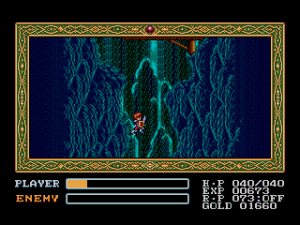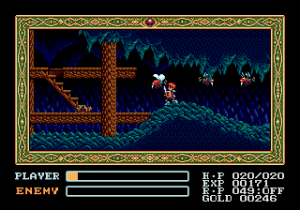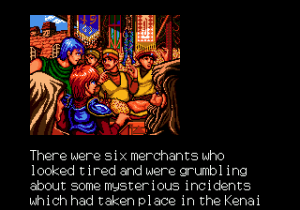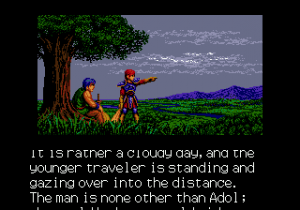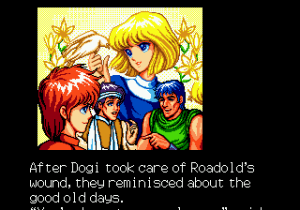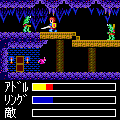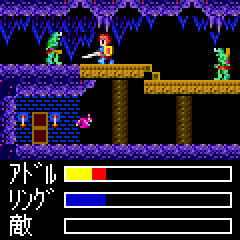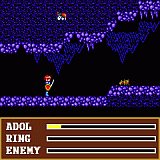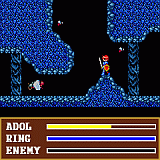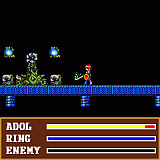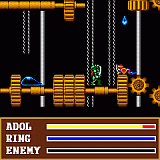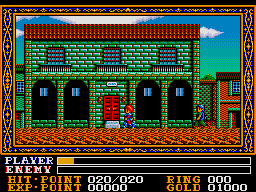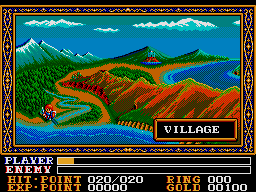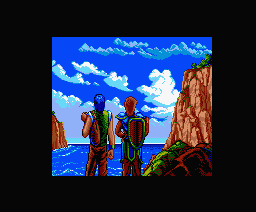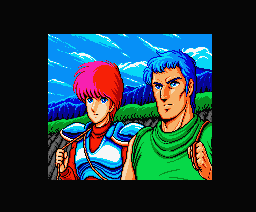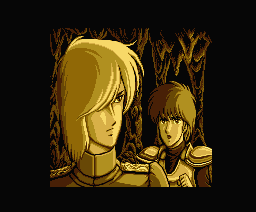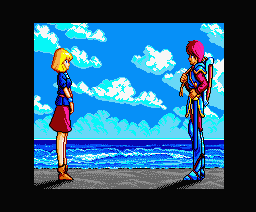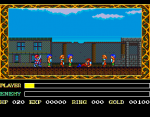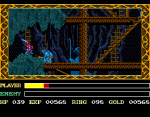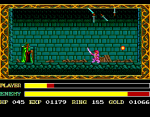- Ys Book I & II
- Ys III: Wanderers from Ys
- Ys IV: Dawn of Ys / Mask of the Sun
- Ys V: Ushinawareta Suna no Miyako Kefin
- Ys VI: The Ark of Napishtim
- Ys: The Oath in Felghana
- Ys Origin
- Ys Seven
- Ys: Memories of Celceta
- Ys VIII: Lacrimosa of Dana
- Lacrimosa of Dana (Novel)
- Ys IX: Monstrum Nox
- Ys Strategy
- Ys: The Call of Solum
- Ys vs. Sora no Kiseki: Alternative Saga
- Ys (Anime)
The third Ys game takes a cue from Zelda II and flings the series in a side scrolling perspective. As a result, many fans regard it with quite a bit of disdain (again, much like Zelda II). Taking place a few years after the first two games, Adol and Dogi travel to the town of Redmont, where evil happenings are going on. All of this is somehow related to the cold-hearted childhood friend Elena and her malicious brother Chester (surely the best-named evil doer in video game history), who is seeking the power of an ancient demon named Galbalan (AKA Demonicus in some versions). Naturally, it’s up to Adol to investigate the conspiracy, none of which has anything to do with the land of Ys. Incidentally, the original title of the game was not Ys III, but simply Wanderers from Ys. Later console ports added the Ys III designation.
Characters
Elena Stoddard
Elena seems like a cold-hearted brat at first, but after Adol tries to save her brother Chester from the clutches of evil, she warms up a bit. Naturally, she gets kidnapped in the end.
Chester Stoddard
Truly a Great Villain in Video Game History, Chester aspires to be a major bad ass by summoning the power of the evil Demanicus (or Galbadan, depending on what version is played). His voice actor for the English Ys III is terribly amazing.
Edgar
The mayor of Redmont, whom Adol finds lying wounded in the mines. He is very thankful of having a true hero around, and keeps supporting Adol on his quest. He doesn’t have any artwork in the original versions of Ys III, so this picture is from the PS2 remake.
Count McGuire
The ruler of Felghana, known by everyone as a cruel tyrant. So it doesn’t surprise at all that he also has his hands in the restoration of the big bad. The Oath in Felghana tries to humanize him a bit by introducing his wife and children, but in the original Wanderers of Ys he stays mostly in the background.
Dularn
A mysterious sorcerer that weasels around McGuire. His true identity is a big mystery throughout most of the game.
When it was originally released, Ys III was something of a technical marvel due to its multiplane background scrolling. It seems quaint now, but this was a big deal for the PC88 back in 1989, even if it is slow and choppy in its original incarnations. From a control standpoint, the side scrolling venue is a little awkward at first, especially when attacking in mid-air, but Adol swings his sword like a buzzsaw and the joy of dashing back and forth, cutting through enemies to steal their luscious experience, is still maintained. Like the other games, a lot of time is spent power leveling, because skill isn’t something that will win battles here. There’s no magic, but the rings are back for a variety of effects (higher offense, higher defense, time slowdown, etc.), although you can only use them for a limited amount of time, which is recharged by slaying enemies.
There are still some major problems. The overworld is missing, replaced by a straightforward map screen. Since there’s no longer any field, each stage is prefaced by a brief “entrance” area, where Adol can stay and regenerate health. The maze-like designs of the previous Ys games are entirely gone. Most of the “dungeons” are straightforward paths, with an occasional rewarding branch to explore. There are only a handful of areas – the Tigre Quarry, the Illburn Ruins (and the lava areas that lie beneath), the snowy Mt. Elderm, the Castle Valestein, and the Island of Genos. That’s about the same number of areas as in Ys II, but they’re so short that the game flies by very quickly, with most of the time spent grinding.
The boss fights are made unnecessarily frustrating due to the damage they deal, combined with the overall shortness of Adol’s weapon and generally questionably hit detection. Despite these issues, and the distance Ys III places itself from the rest of the series, it’s still oddly fun. The graphics are mediocre, outside of the multiplane scrolling. But so much of the game’s strength lies in the music. There’s not a single bad tune in the entire soundtrack, and it actually outclasses the original two games, which is no small feat. Yuzo Koshiro did not compose any new music for this title, and a vast majority of the soundtrack was composed by Mieko Ishikawa.
The game was initially released on the PC88, though the scrolling is fairly choppy. The PC98 version has a handful of tweaks, including a difficulty select option and CPU throttling. The MSX version looks slightly nicer, as the number of colors was increased from 8 to 16. However, the scrolling is still choppy, and the PSG music is inferior to the PC88/98 FM music. The X68000 port is the best of the home computer versions, offering smoother scrolling and 256 color graphics. However, the MIDI synth is a little bit hard on the ears when stacked up against the PC-88 version, though it does have a few extra music tracks, including a new miniboss theme “Chop” and “The Theme of Chester”. The Famicom version has the worst graphics and sound of any of the ports. There’s not much of an intro, with only a few scenes and old music from previous games. Multiplane scrolling is completely gone, and some parts of the dungeons have been redesigned or omitted – the final maze is no longer cloaked in darkness, for example – but otherwise it plays reasonably well.
Ys III was released on all three 16-bit consoles, and surprisingly, they all made it to America. The Genesis version came out courtesy of Renovation/Telenet, the SNES was brought out by Sammy, and Hudson put out the TG-16 CD version. They’re mostly improved over the computer versions, and while they lack the difficulty options, they’re typically better balanced.
The TG-16 version, like Ys Book I & II, was developed by Alfa Systems and published by Hudson. It’s considered by many to be the definitive edition, primarily due to the amazing CD soundtrack, once again arranged by Ryo Yonemitsu. Even if you have absolutely no intention of playing this game at all, track down the CD just for the music, it’s worth it in extraordinary magnitudes. There are also a few intro cutscenes – one showing some sort of beefy hero of legend with long hair and the other, more traditional anime style intro, with Adol and Dogi sharing a variety of adventures. There’s also some terribly amusing voice acting throughout the game. Unfortunately, the TurboGrafx can’t seem to handle the multiplane backgrounds very well, so a lot of the scrolling is quite choppy. It’s better than the computer versions but still weak compared to the other 16-bit ports. This is also the easiest of the three 16-bit titles, with weaker enemies, easier leveling and less insane boss fights. Oddly enough, the English translation names have been changed – Redmont is now Sarina, Ilburn is now Alcaino, and there are plenty of other differences. The English voice acting is, as is typical, atrocious. Strangely, the translators completely misunderstood the game’s introduction sequence, identifying the ancient hero who slew Galbalan/Demonicus as Adol, when in reality, it’s a completely different character named Genos. The cover artwork makes the same mistake, completely misidentifying the protagonist.
One of the most balanced 16-bit ports is the Genesis edition. The colors have been downgraded a bit, but the game actually runs smoothly, which already puts it above the TG-16 version. The music obviously isn’t quite as good, but for a Genesis, it makes the transition amazingly well and its FM synth makes it sound relatively faithful to the PC originals, particularly the X68000 version. The sound was programmed and arranged by Noriyuki Iwadare, who later went on to compose the music for the Grandia and Lunar series. The intro is also different, showing how Adol and Dogi decided to start their adventure, which are based off illustrations in the original computer game manual. It also maintains the bizarre altered names from the TG-16 release.
The SNES version has a similar intro to the Genesis version, but quite a bit condensed, with entirely different artwork and some totally unnecessary Mode 7 effect. It also offers the cleanest graphics of the three, but they’re also a bit darker. Unfortunately, the music ends up pretty lousy during the conversion process, with totally abrasive sound samples. Considering the SNES’ awesome sound chip, this is a huge shame. The enemies are also incredibly difficult, and the hit detection makes boss battles even more frustrating. It is, however, the only English version to keep the original Japanese names intact.
The PlayStation 2 version, released in Japan in 2005 (fifteen years after Ys III initially came out) by Taito, gives a big overhaul to the game to make it comparable to the Eternal remakes of the first two games. The graphics have been given a major upgrade, with extremely well animated, high res sprites, hand drawn backgrounds, and characters portraits for all of the major characters, including the shopkeepers. Most of the dialogue is fully voiced, including Adol’s, for the first time in the series. The mechanics have been upgraded, too – bad guys are stunned when hit, and Adol has a bit of invincibility time when he is hurt, so say goodbye to those irritating insta-kills from before. Unfortunately, you can’t hold down the attack button anymore and buzzsaw your way through bad guys, although Adol has a pretty cool four hit slashing combo. There is also a separate upwards slash.
For all of the positives, however, there are some cryptic changes. While the game overall feels less broken than all of the other versions, hitting bad guys in mid-air is still difficult, and the difficulty is very unbalanced. On the Normal setting, almost all of the bosses are pansies. There are other weird issues too – the enemy life gauge has been removed, save for boss battles. Most of the levels don’t scroll – instead, they fade in and out as you move from screen to screen. As a result, a lot of the cool multiplane scrolling is missing. So are a lot of the background details. Those awesome waterfalls in the Tigre Mines? Gone. The Volcano in the Ilburn Ruins? Also gone. But the biggest problem is that, other than fixing the controls, Taito didn’t do much to the actual structure. The stages are still linear and dull, and the whole game can still be beaten in three hours. You would think that the wisdom of hindsight would provoke the designers to severely overhaul the game from its core, but they didn’t. As a result, only people that really loved Ys III in the first place could really dig this version. Only a few months after the PS2 release, Falcom published their own remake of Ys III, dubbed The Oath in Felghana. Since it uses the Ys VI engine, the gameplay is entirely different – you can read about it later in the article.
Following the first game in the series, Wanderers from Ys was graced with a teenie-weenie cell phone port by Bothtec, in 2002. The same company then developed a graphically enhanced version two years later. There was yet another distinctive mobile port, but this one was exclusive to Korea, like Ys II Special a decade earlier. Programmed by PNJ Mobile and published by Kama Digital Entertainment in 2004, it was known as Ys III Eternal (이스III 이터널) and featured improved graphics and rearranged levels.
Screenshot Comparisons
TurboGrafx-16 Intro
Genesis Intro
SNES Intro
PlayStation 2 Gallery
[ngg_images source=”galleries” container_ids=”8″ display_type=”photocrati-nextgen_basic_thumbnails” override_thumbnail_settings=”1″ thumbnail_width=”400″ thumbnail_height=”200″ thumbnail_crop=”0″ images_per_page=”0″ number_of_columns=”2″ ajax_pagination=”1″ show_all_in_lightbox=”0″ use_imagebrowser_effect=”0″ show_slideshow_link=”0″ slideshow_link_text=”[Show slideshow]” order_by=”sortorder” order_direction=”ASC” returns=”included” maximum_entity_count=”500″]